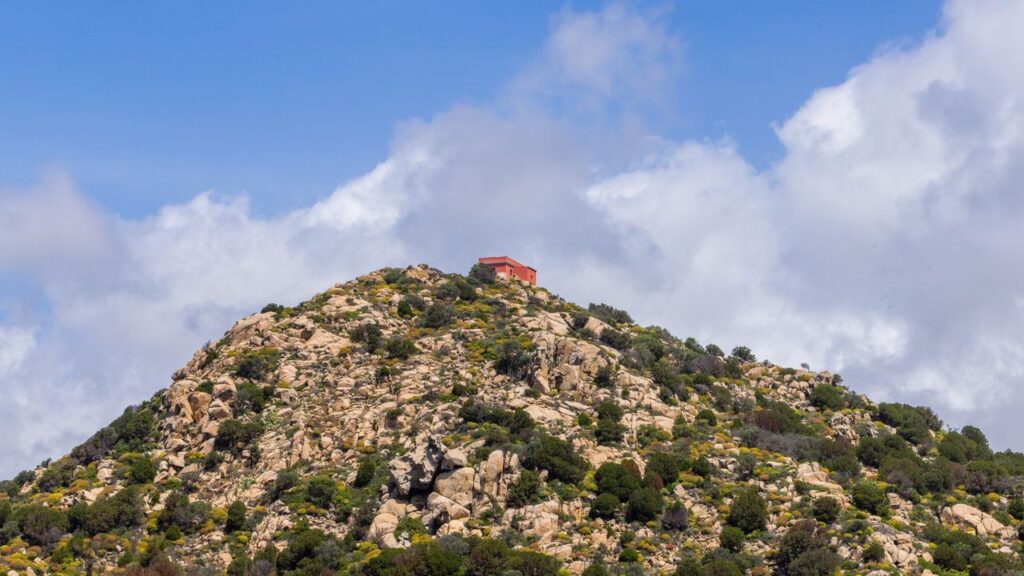The tables at Gli Uffici, on the medieval ramparts of the Castello district in Sardinia’s capital, Cagliari, fill up fast. Lunch is sacrosanct here, with churches, schools, and offices closing in its honor. Locals and visitors come to this beloved restaurant for the sweeping views of the ancient citadel, the port, and the sea, and to feast on the nostalgic favorite porceddu—suckling pig slow-cooked with dandelion and rock salt extracted from Santa Gilla, the lagoon with salt pans that attracts the city’s famous pink flamingos. The white crystalline pyramids graze the horizon.
Reaching for the red wine, I knock over the table salt, which has my Cagliaritana lunch companion, photographer Francesca Ardau, urging me to “appease the devil—throw a pinch over your left shoulder.” It’s a superstition, she tells me, dating back to the Roman conquest, when the island was exploited for its mineral wealth and salt was considered too precious to spill.
I relish lingering over lunch in Cagliari. Back in my student days in Italy, taking the time to sit down and eat, then honor the siesta hour, was a nonnegotiable daily ritual. In many parts of southern Europe, globalization has brought an end to these languid rhythms, but not here. Cagliari stays true to a go-slow ethos revolving around community and culture, with a glass or two of Cannonau, the island’s famous Grenache-like wine, for good measure. The mountainous landscape does its part to keep the population fit, helping Sardinia earn a spot as one of the world’s Blue Zones, areas known for their exceptionally high concentration of centenarians. Though Cagliari has all the comforts of a modern European city, its central focus is on preservation—of place, of customs, and of people.
Ardau asks sardonically (the root of the word can be traced back to the islanders’ black humor) whether I know that the broad beans I am enjoying can kill a person if that person is Sardinian. A quarter of the island’s population has favism, a deficiency of the enzyme needed to digest the fava bean. The very food that helps some Sardinians remain healthy into old age can kill others.
While revisiting the island, I enjoy other Sardinian quirks. In the morning at San Benedetto, one of the largest covered markets in Europe, the Cagliaritani come to do their shopping at the 300 or so booths, where tastings and cooking events are often offered as well. There is a hollered exchange of greetings and gossip between stallholders and shoppers, between neighbors and friends, as they congregate at the bars for the third espresso of the morning. I’m charmed by the Pecorino Romano merchant singing arias to his cheeses and joshing with the pensioner he addresses as “giovanotto,” or young man. The vendor won’t accept anything but cash for the hunk of cheese I’m after. The same thing happens at the Villanova studio of ceramist Gianpaolo Olianas when I try to buy a pair of whimsical cerulean goats. Cagliari is an anomaly, perhaps the only remaining Western capital where cash is still king. Signor Olianas offers me his umbrella, insisting I take it with me on my way to the ATM in case of a sudden unseasonal deluge.
Similarly, the electronic-bike rental service Easycletta refuses any payment for my rental when the bike loses power halfway along Poetto beach. In the summer, residents of the city migrate there from the hill. At almost five miles long, Poetto, the city’s official strip of sand, is one of the longest in Italy. It extends outside the city port to run beside the bamboo-and-reed-fringed brackish lagoons of Molentargius-Saline Regional Natural Park, where herons, egrets, harriers, and flamingos come to breed. In summer seemingly all of Cagliari can be found in the many kiosks and glamorous beach clubs on the shores of the Bay of Angels.





